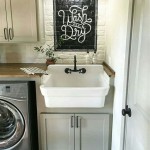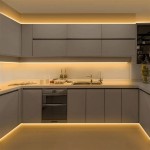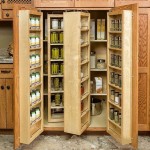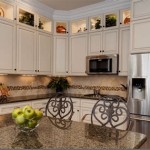White Cabinets: A Practical and Aesthetic Choice for the Laundry Room
The laundry room, often relegated to a functional space, is increasingly recognized as an area deserving of thoughtful design and efficient organization. Among the various elements contributing to a well-appointed laundry room, cabinetry plays a crucial role. White cabinets, in particular, offer a multitude of benefits, ranging from their aesthetic versatility to their practical advantages in a space typically associated with chores.
White cabinetry is a timeless choice for home interiors, and the laundry room is no exception. Its neutrality allows for seamless integration with diverse design styles, and its inherent brightness can significantly enhance the ambiance of the space. This article explores the various aspects of incorporating white cabinets into the laundry room, examining their aesthetic appeal, functional benefits, and considerations for selection and maintenance.
Aesthetic Versatility and Enhanced Brightness
The primary advantage of white cabinets lies in their aesthetic versatility. White serves as a blank canvas, readily complementing a wide range of color palettes and design styles. Whether the homeowner prefers a modern minimalist aesthetic, a classic farmhouse feel, or a contemporary design, white cabinets can seamlessly integrate into the overall scheme. Their adaptability allows for easy coordination with various wall colors, flooring materials, and appliance finishes.
Furthermore, white cabinets possess inherent brightness, which is especially valuable in laundry rooms. These spaces are often smaller and may lack ample natural light. White surfaces reflect light effectively, creating a brighter and more open atmosphere. This is particularly beneficial as it improves visibility, making tasks such as sorting laundry, folding clothes, and ironing easier. Moreover, a brighter environment can contribute to a more pleasant and motivating work space.
The impact of white cabinets on the perceived size of the room should also be noted. Light colors visually expand spaces, making a small laundry room feel less cramped. This effect is particularly pronounced when combined with other light-colored elements, such as light-colored walls and flooring. Conversely, dark cabinetry in a small laundry room can create a feeling of confinement and diminish the perceived size of the space.
The finish of the white cabinets can contribute to the overall aesthetic. A glossy finish will enhance light reflection, creating a more modern and sophisticated look. A matte finish, on the other hand, provides a softer and more subtle appearance, often favored for farmhouse or traditional styles. The choice of hardware, such as knobs and pulls, further influences the overall design. Chrome or brushed nickel hardware can complement a contemporary style, while antique brass or black hardware can enhance a more rustic aesthetic.
Beyond the practical considerations, the aesthetic appeal of white cabinets contributes to the overall comfort and enjoyment of the laundry room. A well-designed space can transform a mundane chore into a more pleasant activity. The clean and uncluttered look that white cabinets provide promotes a sense of order and tranquility, which can be particularly valuable in a space that is often associated with mess and clutter.
Practical Benefits: Organization and Storage Solutions
Beyond their aesthetic appeal, white cabinets offer significant practical benefits in the laundry room, primarily related to organization and storage. A well-designed cabinetry system can transform a chaotic laundry room into an efficient and functional workspace.
The storage capacity of laundry room cabinets is crucial for keeping essential supplies organized and readily accessible. Detergents, fabric softeners, stain removers, and cleaning supplies can be neatly stored away, preventing clutter and maximizing usable space. Cabinets can also be used to store ironing boards, laundry baskets, and other larger items that would otherwise take up valuable floor space.
Different types of cabinets cater to different storage needs. Upper cabinets are ideal for storing frequently used items, while lower cabinets can accommodate larger or heavier items. Tall cabinets can provide ample storage for ironing boards, vacuum cleaners, or other bulky appliances. Pull-out shelves and drawers enhance accessibility and organization, allowing for easy retrieval of items stored at the back of the cabinet.
Consideration of the internal organization of the cabinets is also important. Adjustable shelves provide flexibility in accommodating items of different sizes. Drawer dividers can help to keep smaller items organized and prevent them from shifting around. Specialized storage solutions, such as pull-out hampers or ironing board organizers, can further enhance the functionality of the cabinets.
The location of the cabinets in relation to the washing machine and dryer is also a key factor in maximizing efficiency. Cabinets placed near the appliances can provide convenient storage for detergents and other laundry supplies. A countertop above the washer and dryer can provide a convenient surface for folding clothes. The positioning of the cabinets should be carefully considered to optimize workflow and minimize unnecessary movement.
In addition to providing storage for laundry-related items, cabinets can also be used to store other household essentials. Cleaning supplies, extra linens, or even seasonal decorations can be effectively stored in the laundry room cabinets, freeing up space in other areas of the home. This versatility makes the laundry room a valuable storage asset.
Material Selection, Maintenance, and Durability
Choosing the right material for white laundry room cabinets is essential for ensuring their longevity and durability, especially considering the humid environment often present in laundry rooms. The selection of materials should balance aesthetic considerations with practical requirements for resistance to moisture, staining, and wear and tear.
Solid wood cabinets offer a classic and durable option, but they can be more susceptible to warping and damage from moisture if not properly sealed and finished. Hardwoods like maple or oak are generally preferred for their strength and resistance to dents and scratches. However, solid wood cabinets tend to be more expensive than other options.
Plywood cabinets with a veneer finish provide a more affordable alternative to solid wood. Plywood is less prone to warping than solid wood, and the veneer can be chosen to mimic the look of natural wood. However, the quality of the plywood and the veneer can vary greatly, so it's important to choose a reputable manufacturer.
Medium-density fiberboard (MDF) is another popular option for cabinet construction. MDF is a composite material made from wood fibers that are bonded together with resin. It is a stable and uniform material that is less prone to warping or cracking than solid wood or plywood. MDF is also relatively inexpensive, making it a budget-friendly choice. However, MDF is more susceptible to water damage than solid wood or plywood, so it's important to choose MDF cabinets that are properly sealed and finished.
Laminate cabinets offer a durable and easy-to-clean surface. Laminate is a synthetic material that is bonded to a substrate, such as particleboard or MDF. It is resistant to scratches, stains, and moisture, making it a practical choice for laundry rooms. Laminate cabinets are also relatively inexpensive and available in a wide range of colors and styles.
Regular maintenance is crucial for preserving the appearance and extending the lifespan of white laundry room cabinets. Cleaning spills and splatters promptly is essential to prevent staining. Mild soap and water are generally sufficient for cleaning most cabinet surfaces. Abrasive cleaners should be avoided, as they can scratch or damage the finish. Periodically cleaning the inside of the cabinets is also important to prevent the buildup of dust and dirt.
Proper ventilation in the laundry room can help to reduce humidity and prevent moisture damage to the cabinets. Ensuring that the room is well-ventilated, either through natural ventilation or a ventilation fan, can help to prolong the life of the cabinets.
The durability of the cabinet finish is also a key consideration. A high-quality finish will be more resistant to scratches, stains, and fading. Consider choosing a cabinet finish that is specifically designed for high-moisture environments. A durable finish will help to protect the cabinets from damage and maintain their appearance for years to come.
Choosing the right hardware for white cabinets is also important. The hardware should be durable and resistant to corrosion. Stainless steel or brushed nickel hardware are good choices for laundry rooms, as they are resistant to rust and tarnishing. The style of the hardware should also complement the overall design of the laundry room.

Dakota White Pre Assembled Laundry Room Cabinets The Rta Store

Laundry Room Cabinets Rta For Sale Online

White And Gray Laundry Room Mudd Homecrest Cabinetry

Diamond Express Jamestown White Laundry Room Cabinet Collection

Arcadia White Laundry Room

Mill S Pride Richmond Verona White Plywood Shaker Ready To Assemble Base Kitchen Cabinet Laundry Room 132 In W X 24 D 90 H Ldry 2t132 Rvw The Home

Simply White Laundry Room Crystal Cabinets

Flow Wall 2 Piece Laundry Cabinet Set White

Off White Laundry Room Cabinets Design Ideas

White And Gray Laundry Room With Charcoal Hexagon Floor Tiles Transitional
See Also








